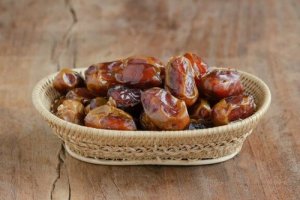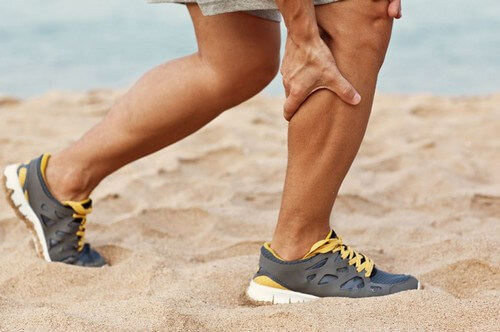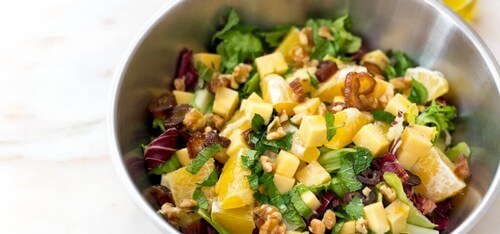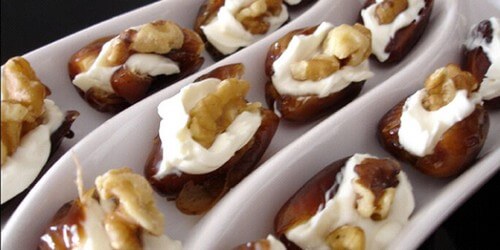How Dates Can Improve Athletic Performance

Dates are an interesting fruit when it comes to fitness. They’re recommended for almost anyone (except for diabetics) and especially for athletes. Find out more about how dates can improve athletic performance.
As you’ll see next, they’re popular because their nutrients and properties favor your health and performance. We’ll go over a few ways how dates can improve athletic performance below.
How dates can improve athletic performance
1. They give you energy
Dates can boost your natural energy to give you the extra vigor you’ll need to perform better every time. What’s more, it’s best to eat them a while before exercising so that your energy will be at its highest when you start.
Also, if you’ll be working out for long periods of time, you can eat them during a break. This way, you’ll delay fatigue and perform better during your entire session.
2. They’re rich in potassium
Indeed, all athletes should include potassium-rich foods in their diet. As luck would have it, dates are one of those foods. One of the most important benefits of potassium is that it improves your heart rate, blood pressure, muscle growth, and your body’s fluid regulation.
Further, it’s especially great for athletes who tend to get muscle cramps. Dates are a simple, effective, and natural way to help prevent them.
Read more about: Potassium is Extremely Important for All Athletes

3. They boost muscle health
Dates are rich in vitamin B3 (niacin), which directly impacts your muscles. This vitamin helps the functioning of your muscular system and favors psychomotor capabilities.
In addition, B3 helps to convert carbs into energy and favors the production of red blood cells, which are responsible for sending oxygen to your muscles.
For the above reasons, it’s a good idea for athletes to make dates a part of their diet. Whatever sport you practice, you should always pay special attention to your muscles. Other foods rich in vitamin B3 include liver, beef, peppers, and rice.
Discover: Exercise and B Vitamins
Dates can improve athletic performance – in moderation
Without a doubt, dates offer many benefits and are recommended for that very reason. Still, you shouldn’t start eating them in large amounts. Indeed, they’re very high in sugar as well as calories.
As such, you should eat them in small amounts, especially when they can help boost your fitness performance. Eating a lot of them is far from beneficial; it can drastically raise your blood sugar levels. What’s more, it would lead to an increase in muscle mass.
Different ways to enjoy dates
Now that you know about their benefits, you just need to eat them. The most common way is as a snack. They can also be easily carried in a bag so you can reach for them at any time.
To avoid getting bored of eating them the same way, we’ll look at different options.
- Salad with dates: dates go well with fresh cheese, lettuce, and cherry tomatoes. Just chop three or four dates to enjoy their benefits and to give your salad a unique touch.

Date skewers: good for a quick meal or an appetizer. Cook several bacon strips and roll them over the dates. Then, stick them on a skewer with pieces of grilled chicken.

Dates with fresh cheese: for a quick and healthy snack, cut a date in half and stuff it with a tablespoon of fresh cheese. You can also place a toasted, natural flavored nut such as a walnut or almond.

In conclusion, dates can improve athletic performance while boosting the health of athletes. Moreover, eating them is simple and they have a nice flavor. Of course, remember to eat them in small amounts since they’re high in sugar and calories.
Dates are an interesting fruit when it comes to fitness. They’re recommended for almost anyone (except for diabetics) and especially for athletes. Find out more about how dates can improve athletic performance.
As you’ll see next, they’re popular because their nutrients and properties favor your health and performance. We’ll go over a few ways how dates can improve athletic performance below.
How dates can improve athletic performance
1. They give you energy
Dates can boost your natural energy to give you the extra vigor you’ll need to perform better every time. What’s more, it’s best to eat them a while before exercising so that your energy will be at its highest when you start.
Also, if you’ll be working out for long periods of time, you can eat them during a break. This way, you’ll delay fatigue and perform better during your entire session.
2. They’re rich in potassium
Indeed, all athletes should include potassium-rich foods in their diet. As luck would have it, dates are one of those foods. One of the most important benefits of potassium is that it improves your heart rate, blood pressure, muscle growth, and your body’s fluid regulation.
Further, it’s especially great for athletes who tend to get muscle cramps. Dates are a simple, effective, and natural way to help prevent them.
Read more about: Potassium is Extremely Important for All Athletes

3. They boost muscle health
Dates are rich in vitamin B3 (niacin), which directly impacts your muscles. This vitamin helps the functioning of your muscular system and favors psychomotor capabilities.
In addition, B3 helps to convert carbs into energy and favors the production of red blood cells, which are responsible for sending oxygen to your muscles.
For the above reasons, it’s a good idea for athletes to make dates a part of their diet. Whatever sport you practice, you should always pay special attention to your muscles. Other foods rich in vitamin B3 include liver, beef, peppers, and rice.
Discover: Exercise and B Vitamins
Dates can improve athletic performance – in moderation
Without a doubt, dates offer many benefits and are recommended for that very reason. Still, you shouldn’t start eating them in large amounts. Indeed, they’re very high in sugar as well as calories.
As such, you should eat them in small amounts, especially when they can help boost your fitness performance. Eating a lot of them is far from beneficial; it can drastically raise your blood sugar levels. What’s more, it would lead to an increase in muscle mass.
Different ways to enjoy dates
Now that you know about their benefits, you just need to eat them. The most common way is as a snack. They can also be easily carried in a bag so you can reach for them at any time.
To avoid getting bored of eating them the same way, we’ll look at different options.
- Salad with dates: dates go well with fresh cheese, lettuce, and cherry tomatoes. Just chop three or four dates to enjoy their benefits and to give your salad a unique touch.

Date skewers: good for a quick meal or an appetizer. Cook several bacon strips and roll them over the dates. Then, stick them on a skewer with pieces of grilled chicken.

Dates with fresh cheese: for a quick and healthy snack, cut a date in half and stuff it with a tablespoon of fresh cheese. You can also place a toasted, natural flavored nut such as a walnut or almond.

In conclusion, dates can improve athletic performance while boosting the health of athletes. Moreover, eating them is simple and they have a nice flavor. Of course, remember to eat them in small amounts since they’re high in sugar and calories.
All cited sources were thoroughly reviewed by our team to ensure their quality, reliability, currency, and validity. The bibliography of this article was considered reliable and of academic or scientific accuracy.
-
Ricardo Salomón Torres; Noé Ortiz Uribe; Carlos Villa Angulo. 2017. Composición nutricional y funcional del dátil (Phoenix Dactylifera L.) variedad Medjool. UES-San Luis Río Colorado, Sonora
2Instituto de Ingeniería, UABC, Mexicali. Recuperado de: https://www.researchgate.net/publication/320892285_Composicion_Nutricional_y_Funcional_del_Datil_Phoenix_Dactylifera_L_Variedad_Medjool -
Chao, C. C. T., & Krueger, R. R. (2007). The date palm (Phoenix dactylifera L.): Overview of biology, uses, and cultivation. In HortScience (Vol. 42, pp. 1077–1082). https://doi.org/10.1007/978-3-531-19041-9
- Baliga, M. S., Baliga, B. R. V., Kandathil, S. M., Bhat, H. P., & Vayalil, P. K. (2011). A review of the chemistry and pharmacology of the date fruits (Phoenix dactylifera L.). Food Research International, 44(7), 1812–1822. https://doi.org/10.1016/j.foodres.2010.07.004
- Demason, D. A., Madore, M. A., Sekhar, K. N. C., & Harris, M. J. (1992). (Phoenix dactylifera). University of Florida/Institute of Food and Agricultural Sciences, 177–184.
This text is provided for informational purposes only and does not replace consultation with a professional. If in doubt, consult your specialist.








